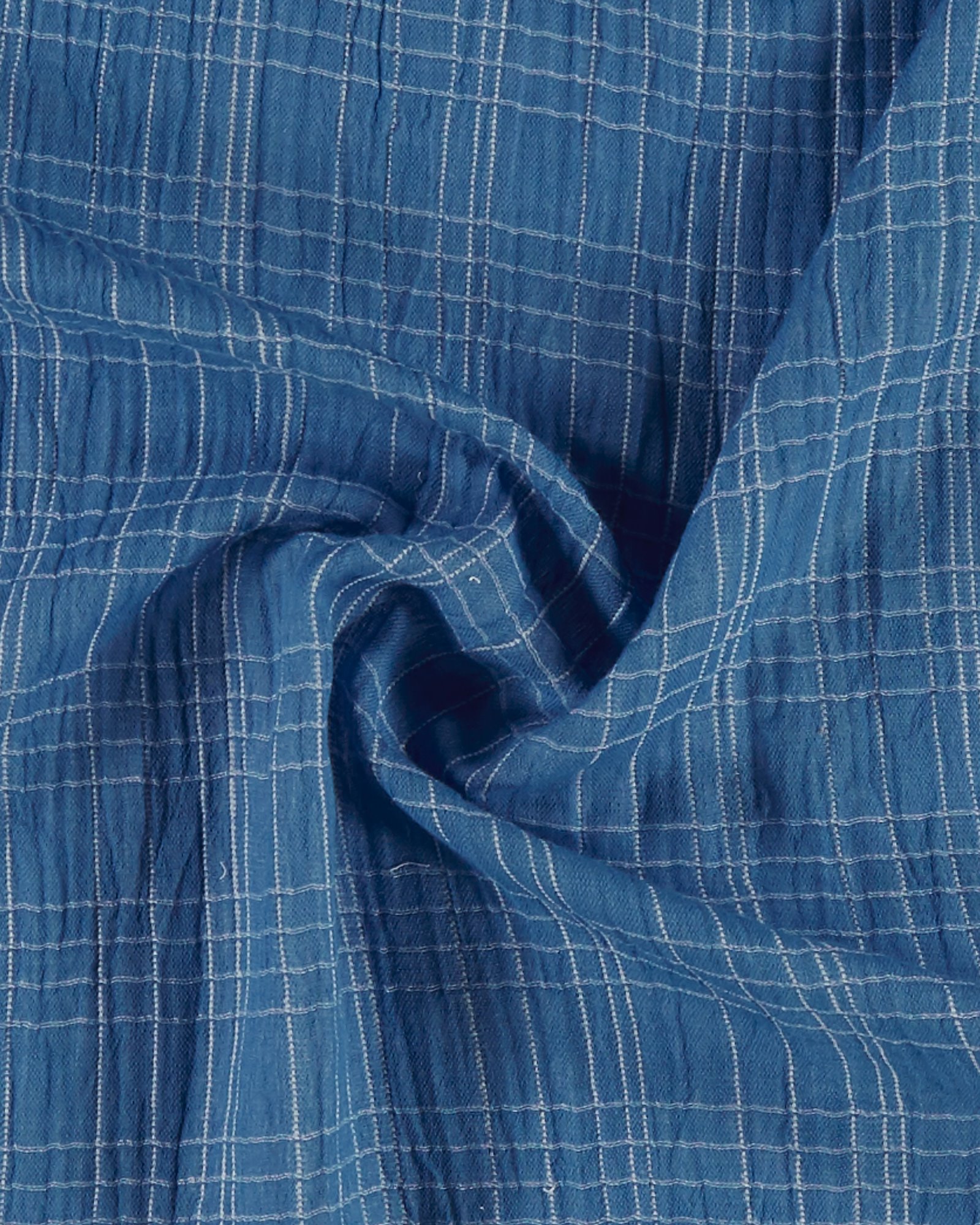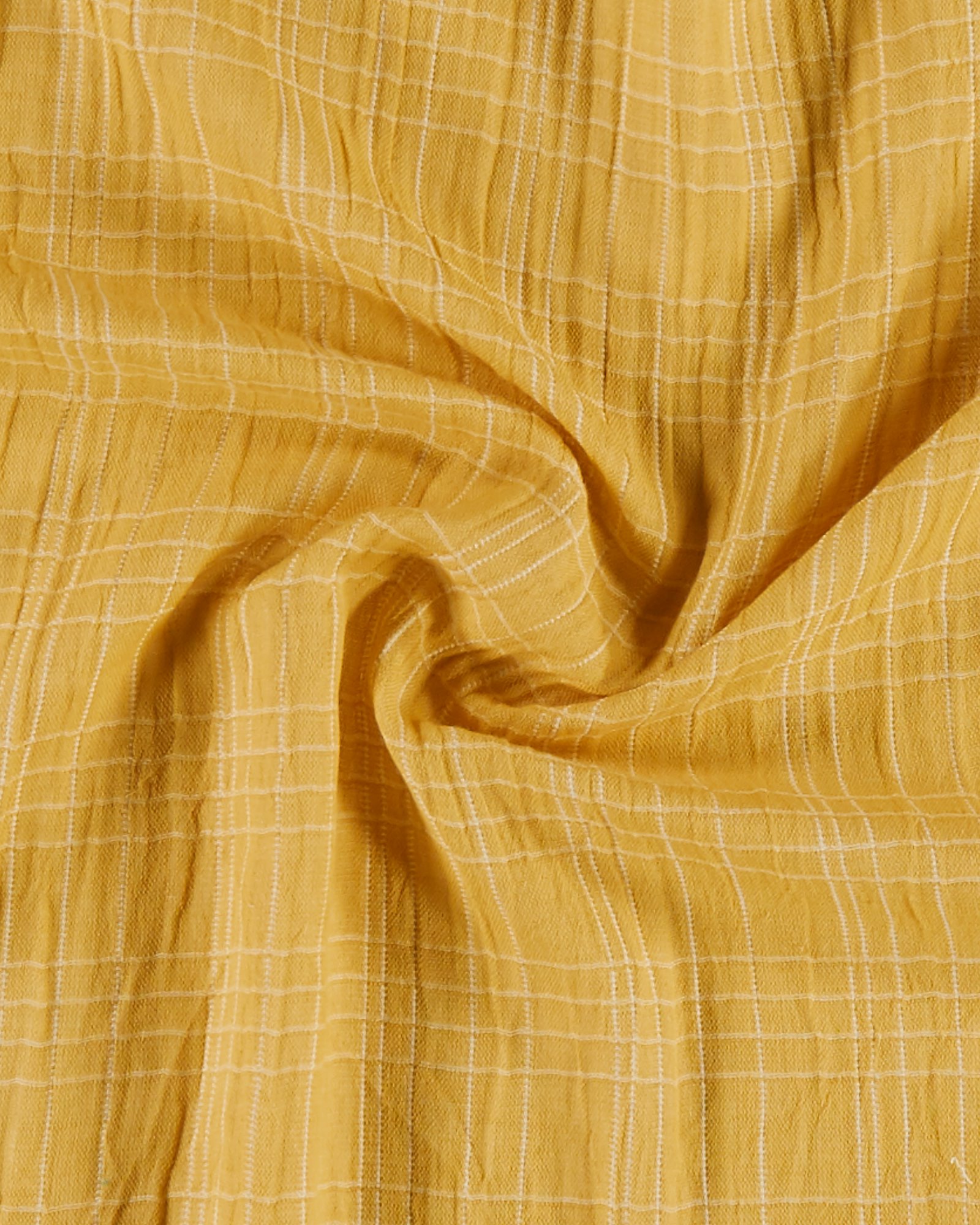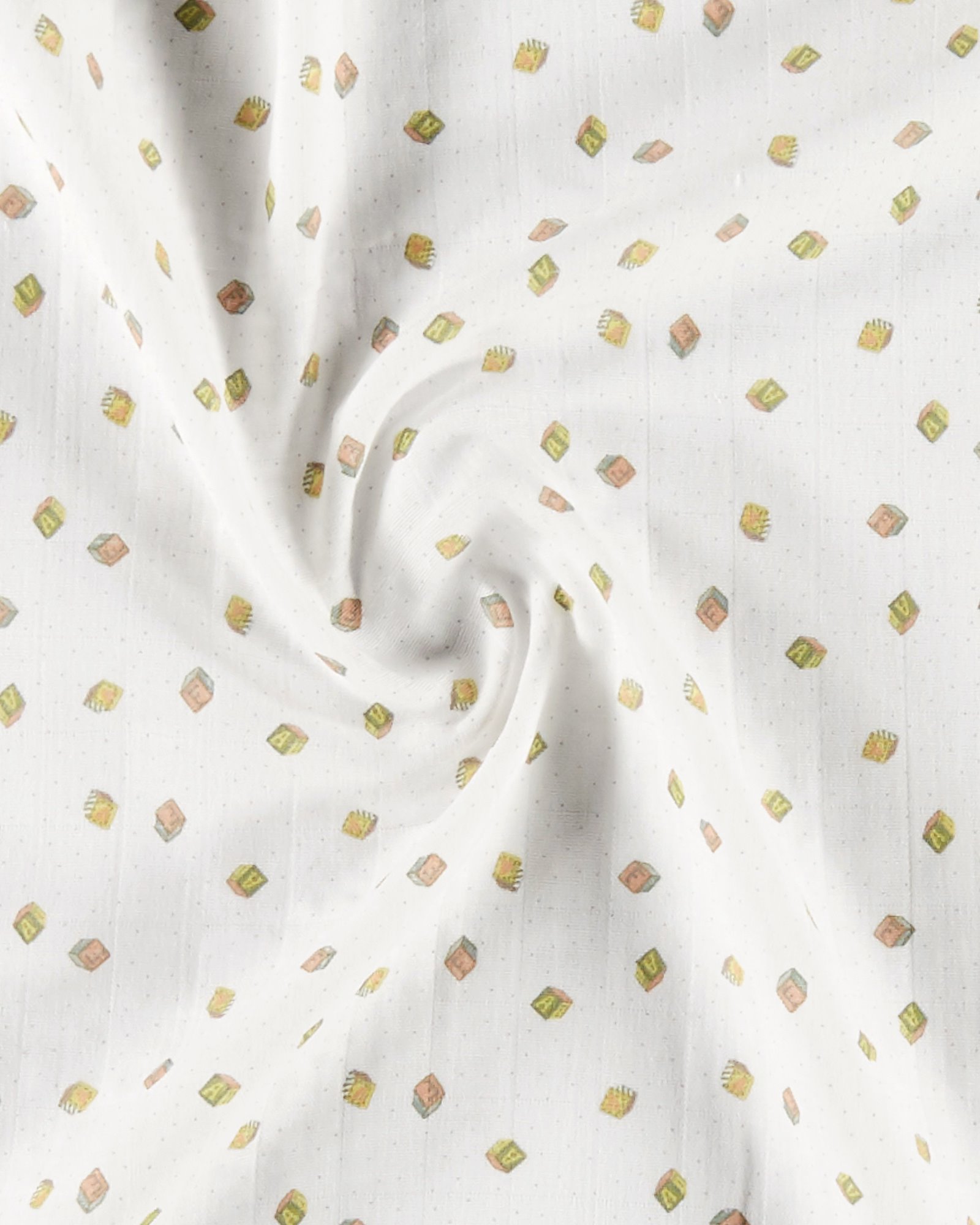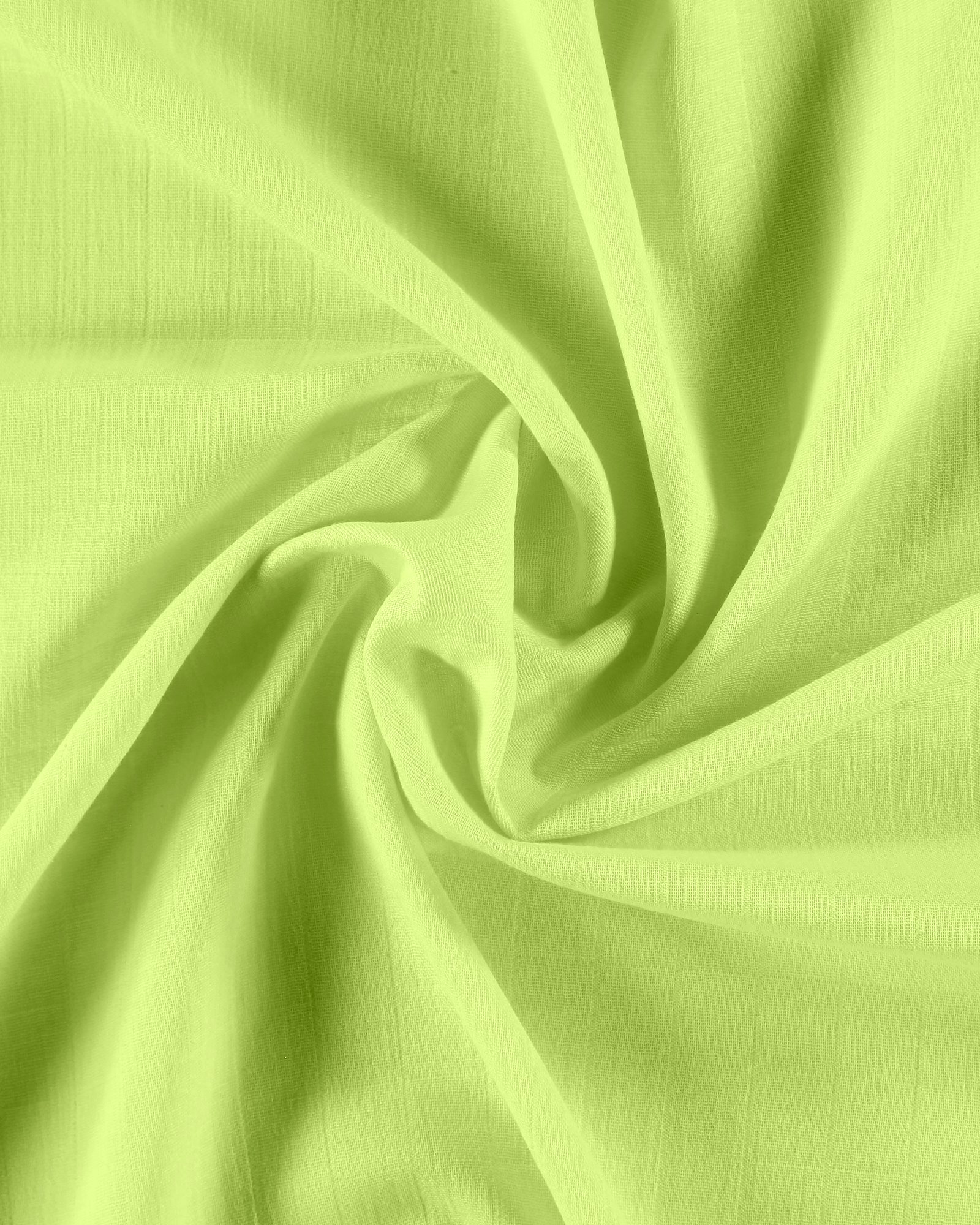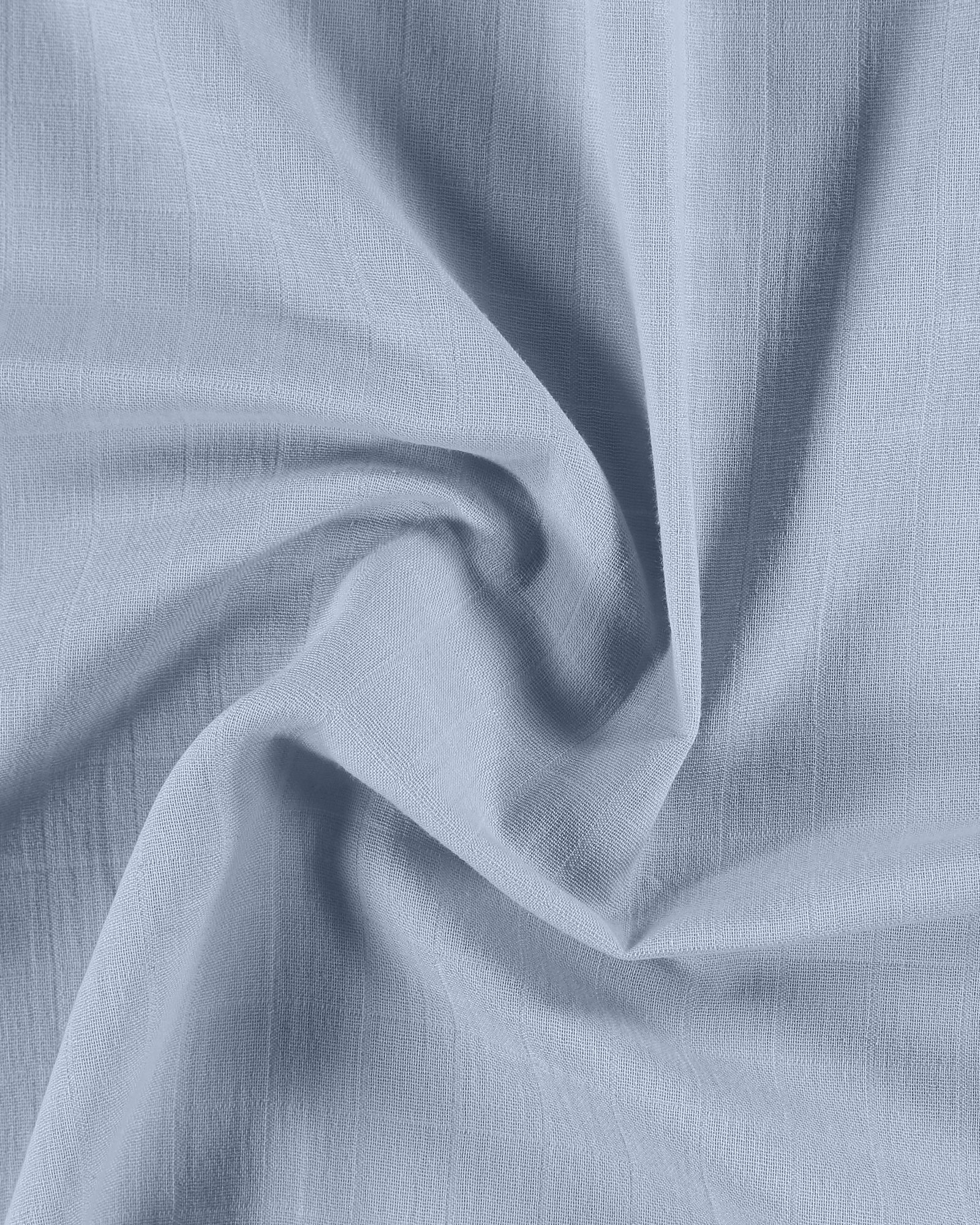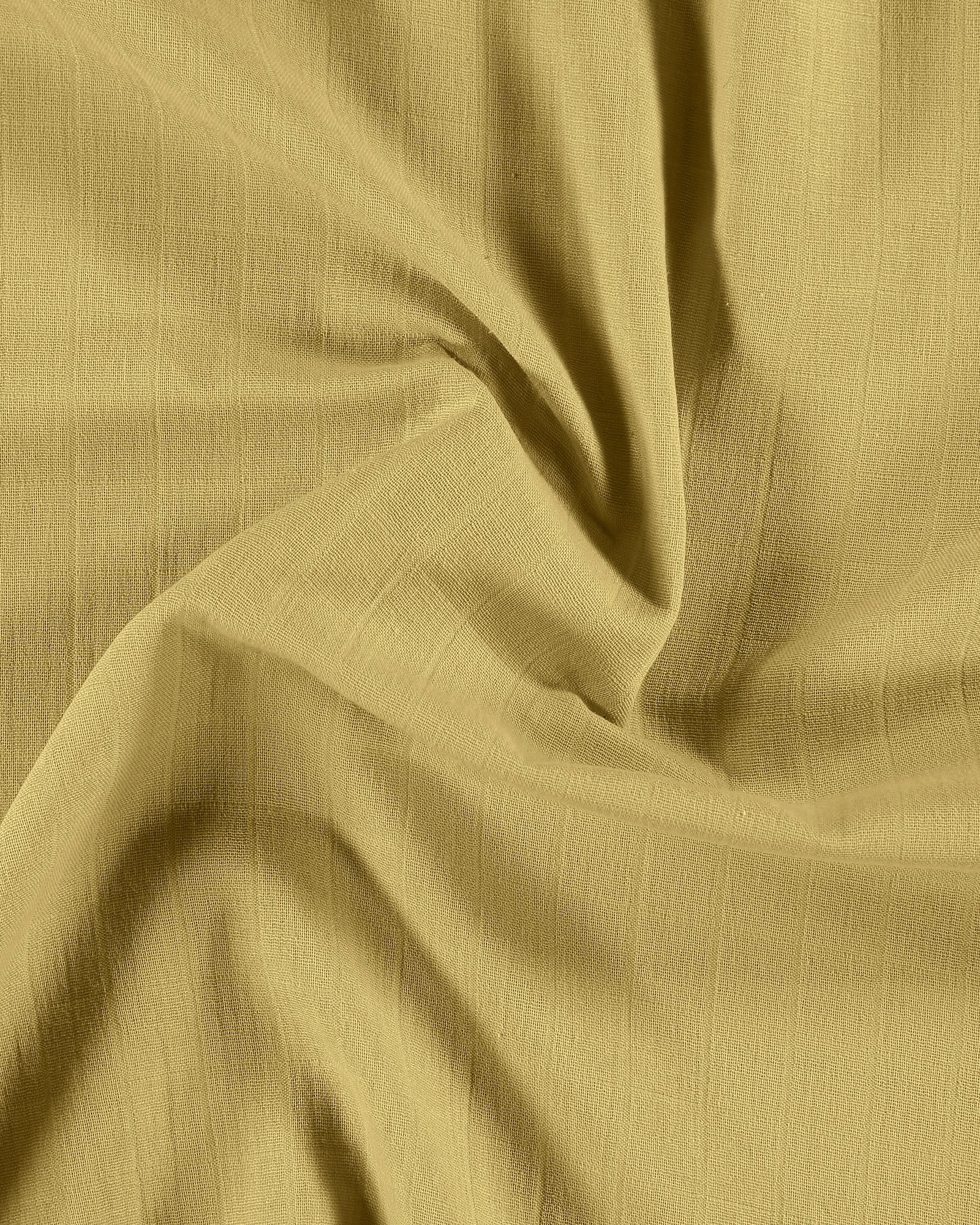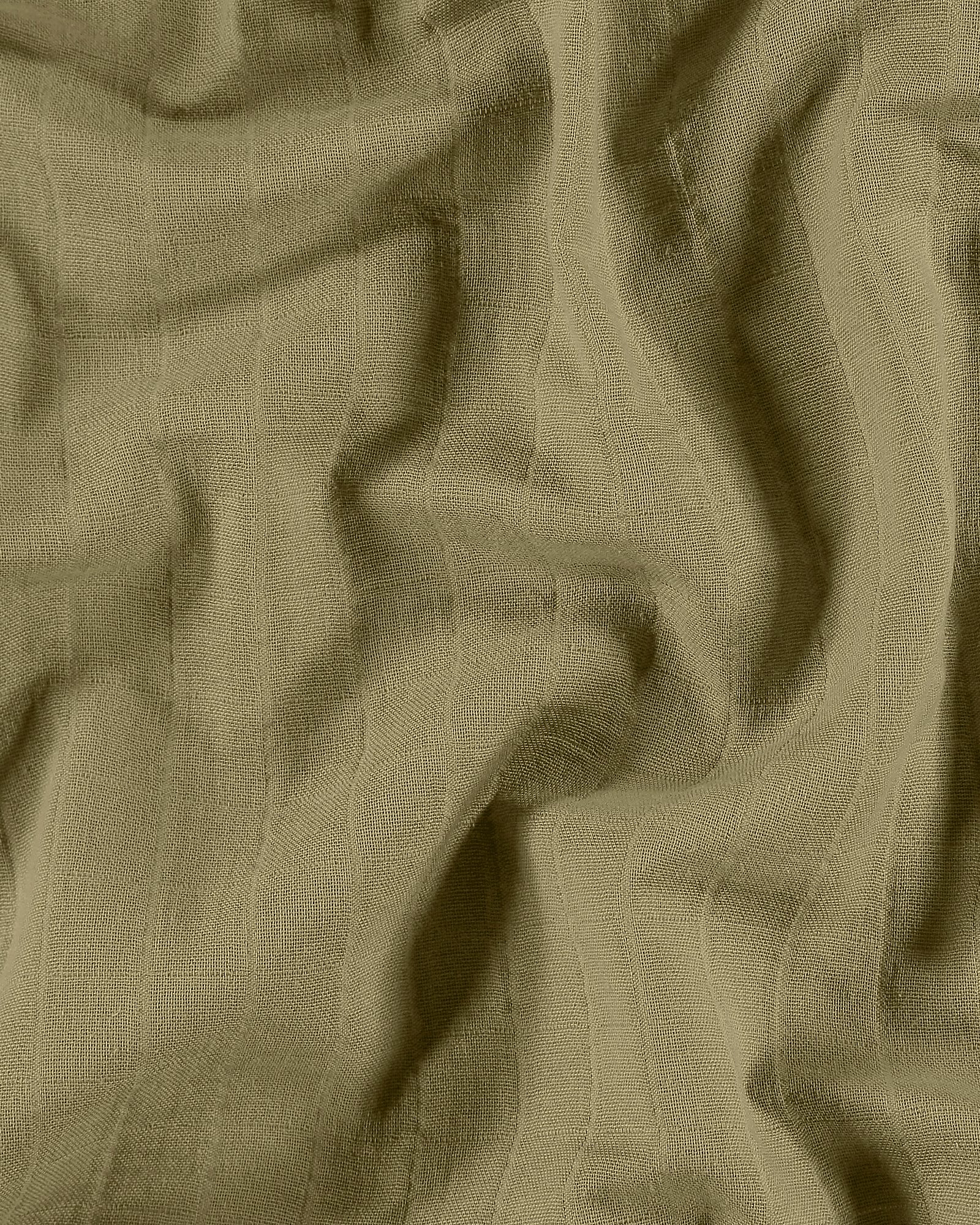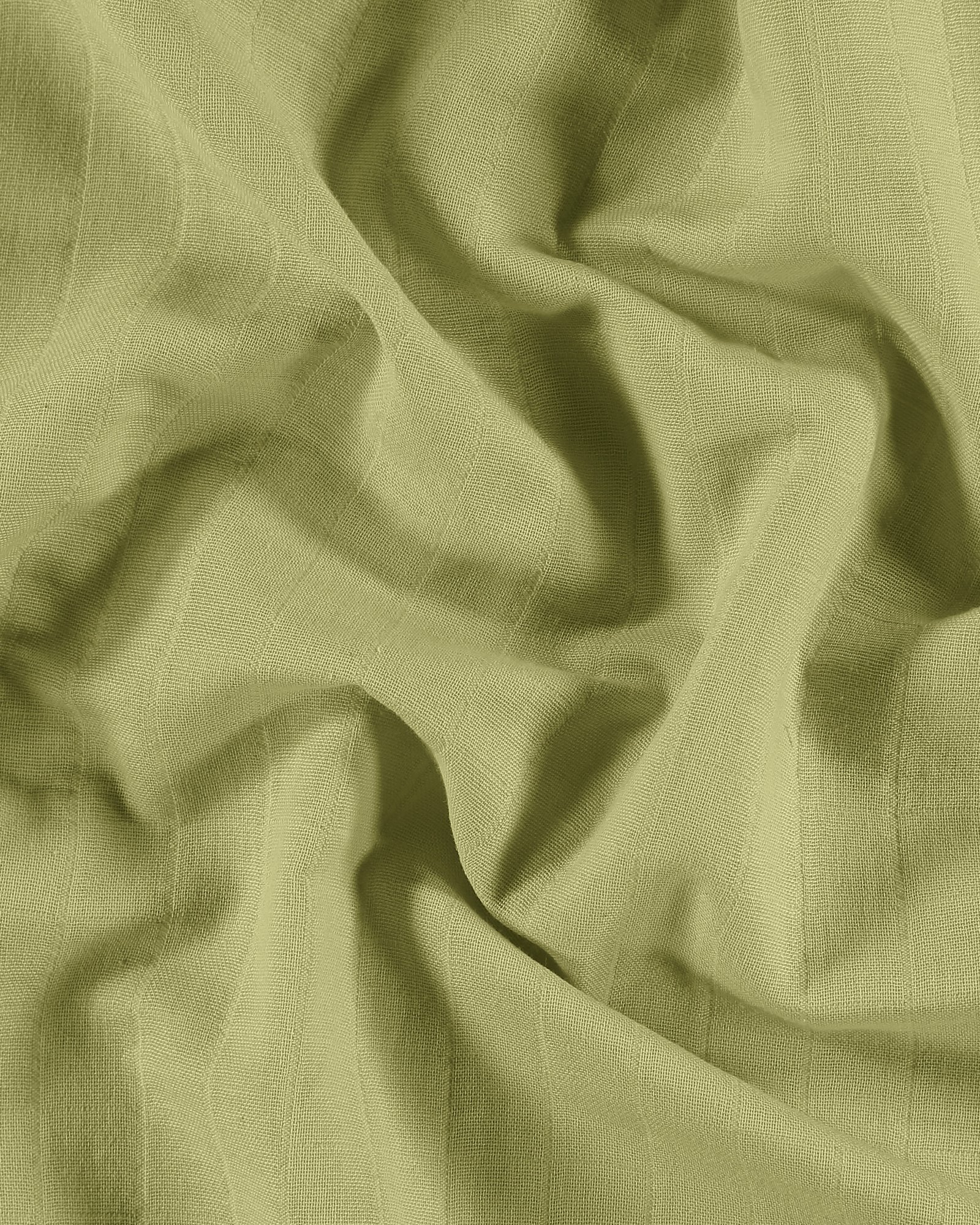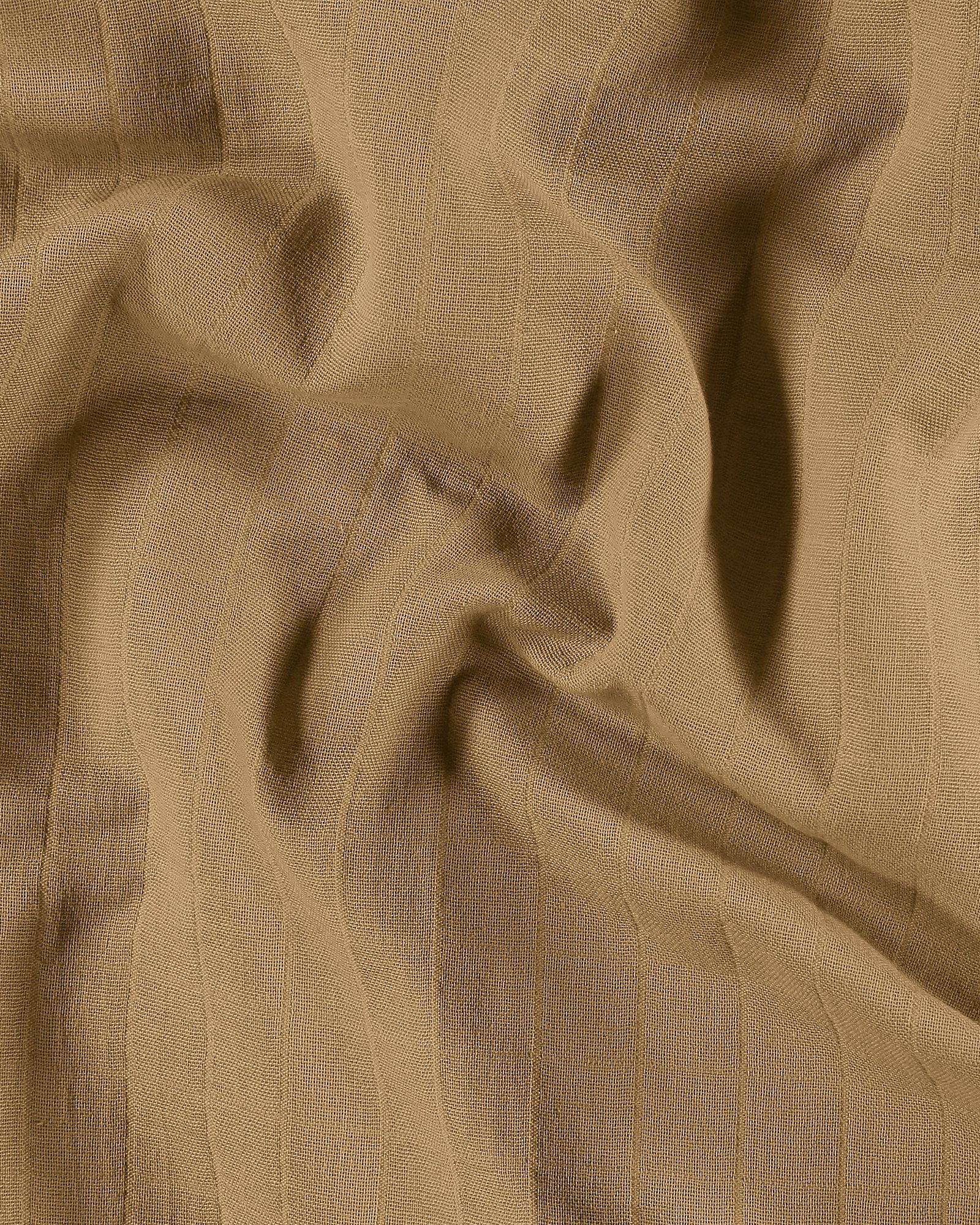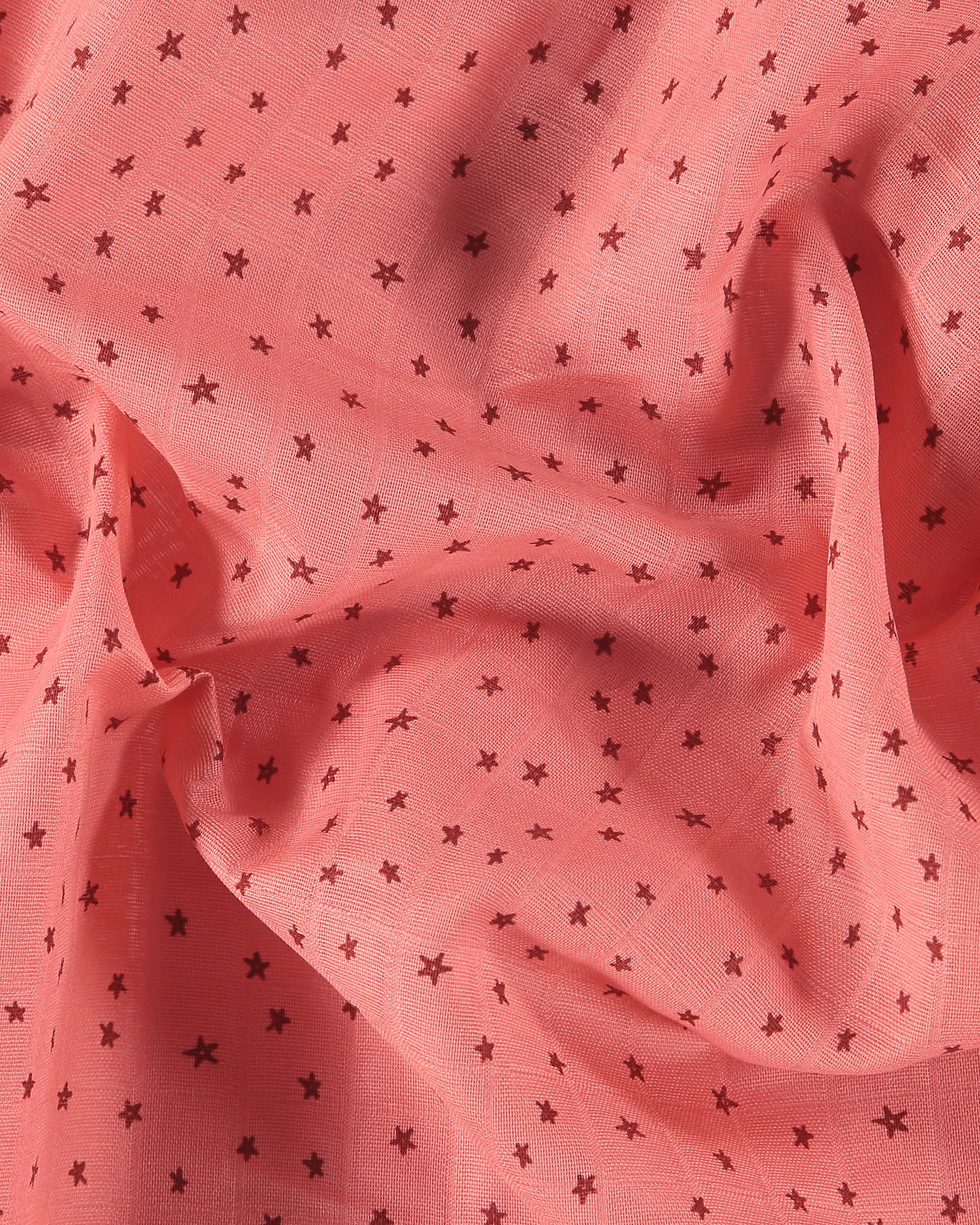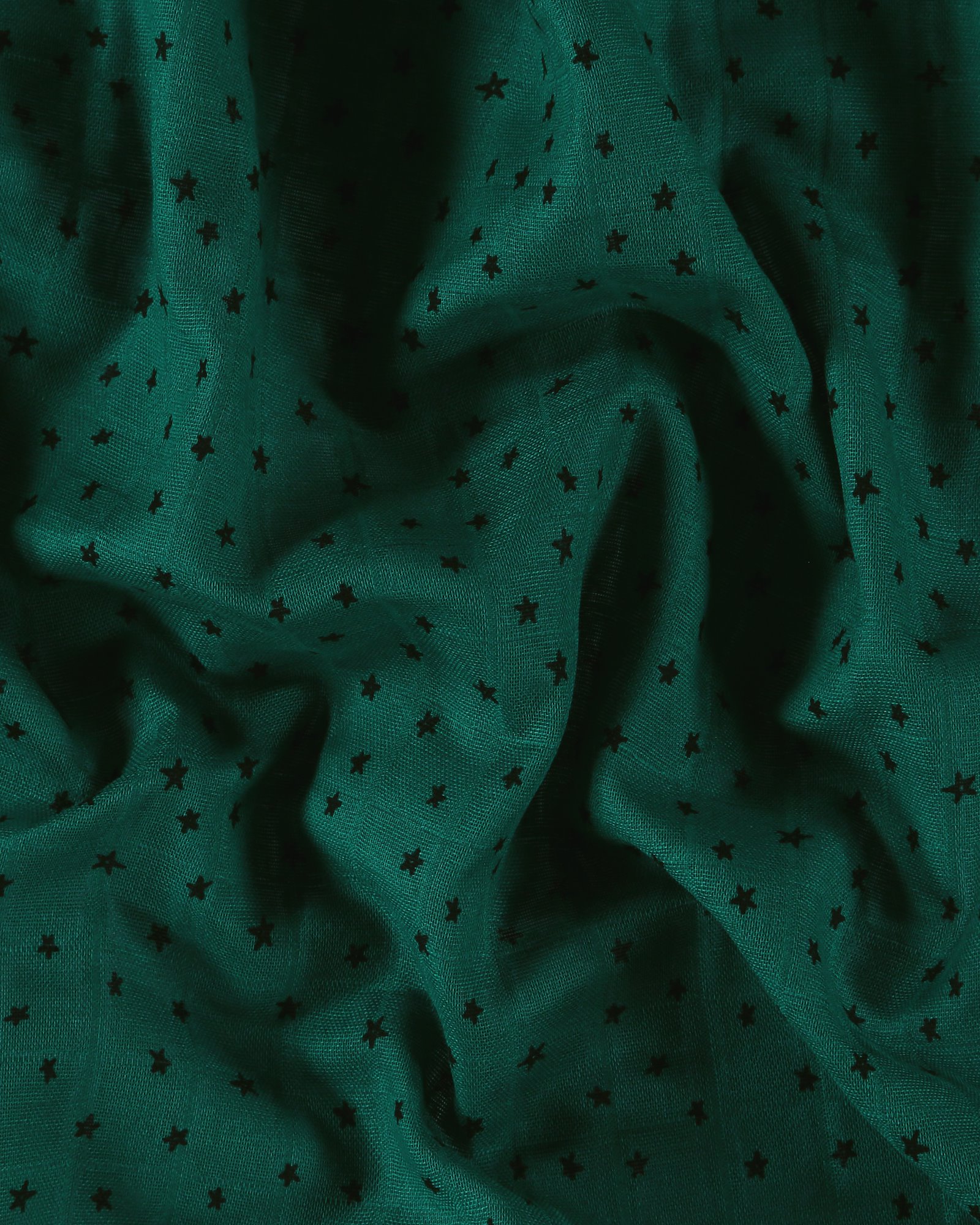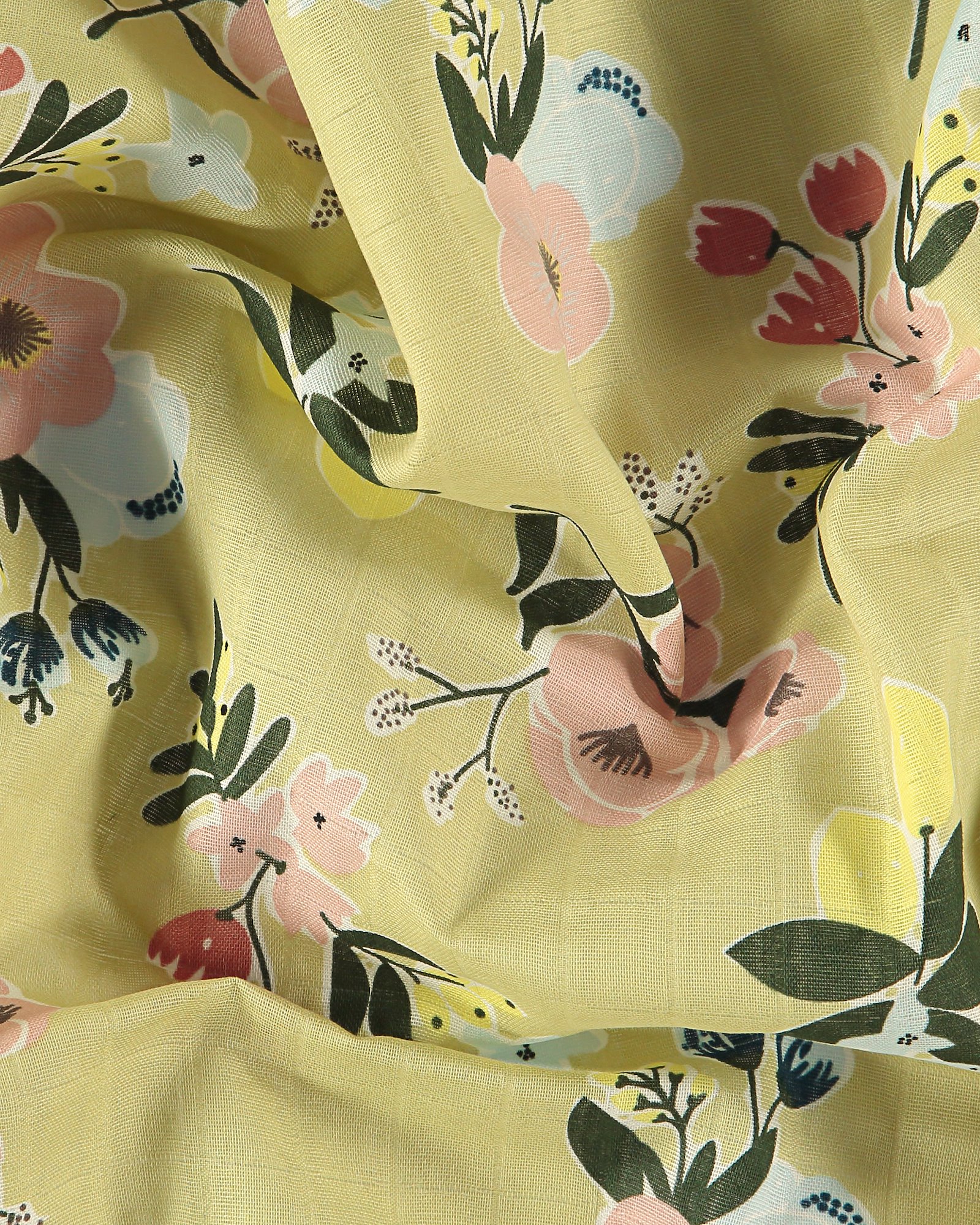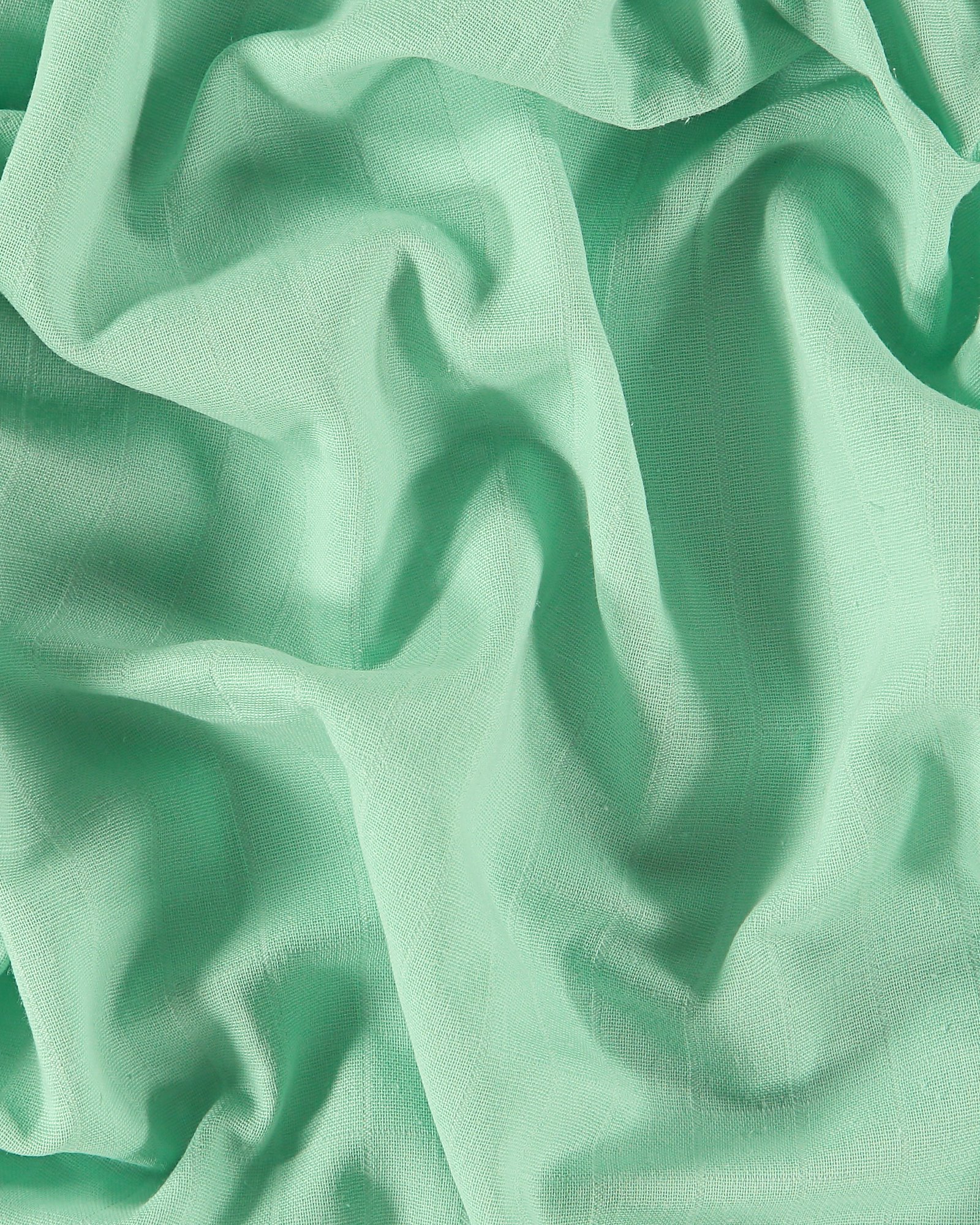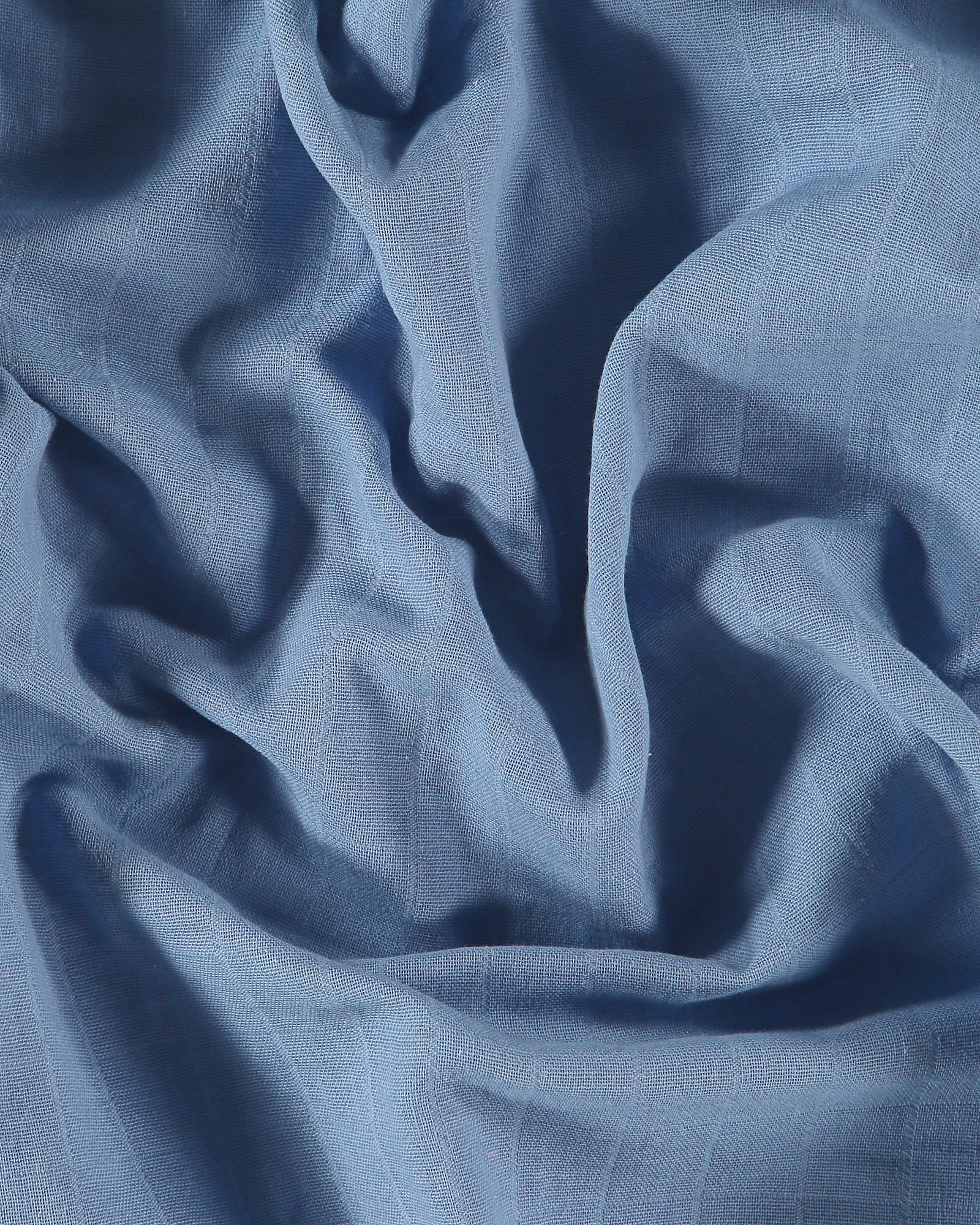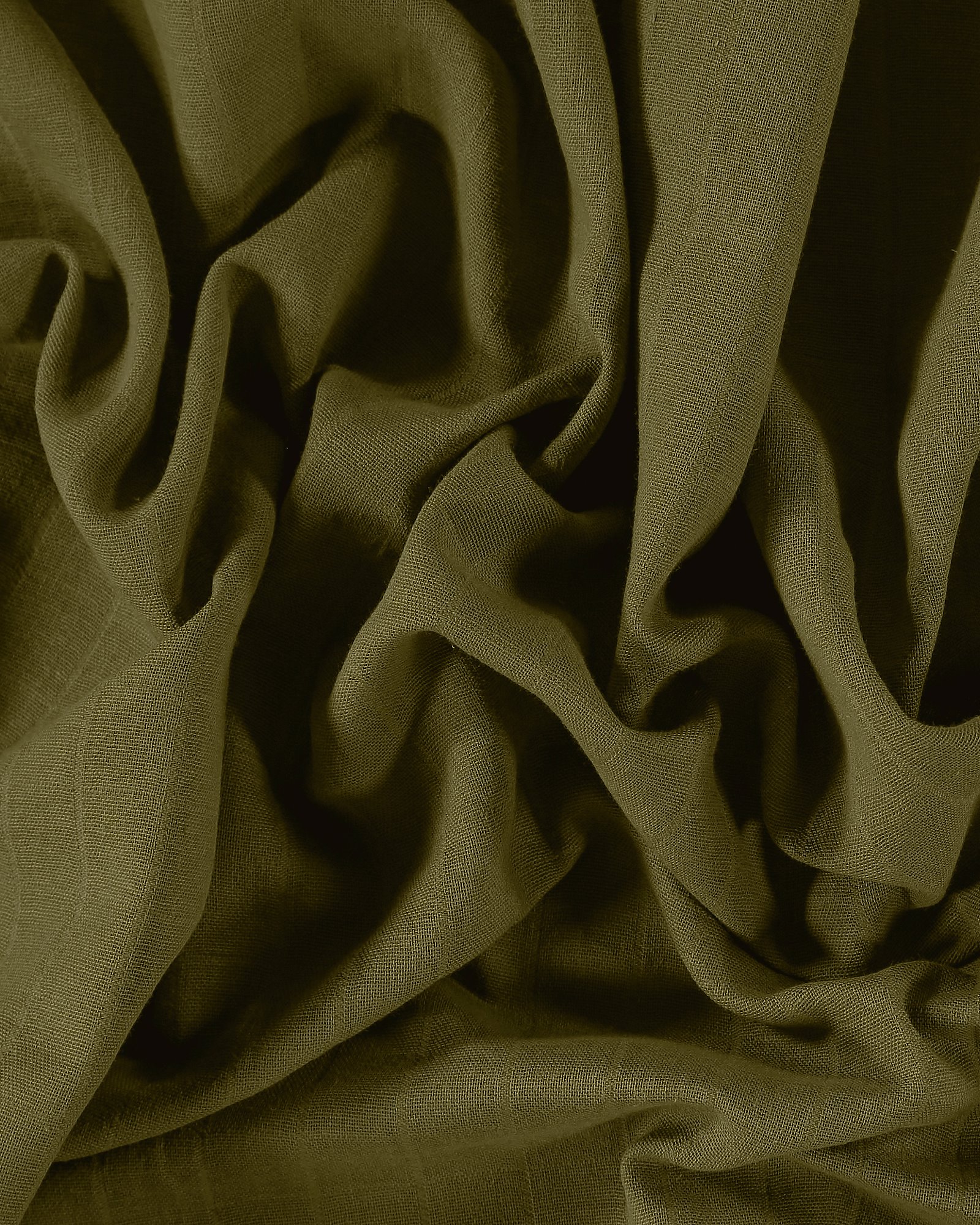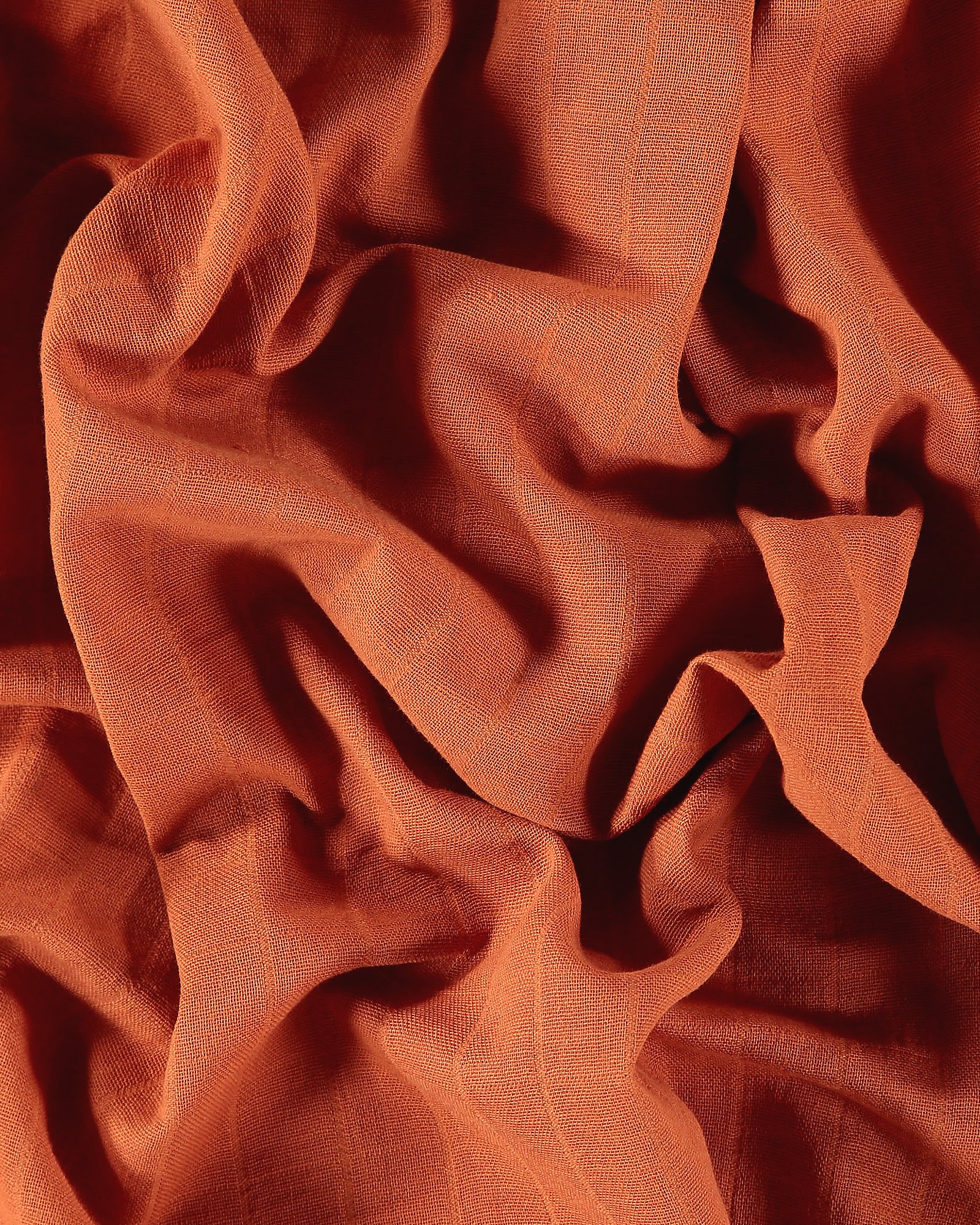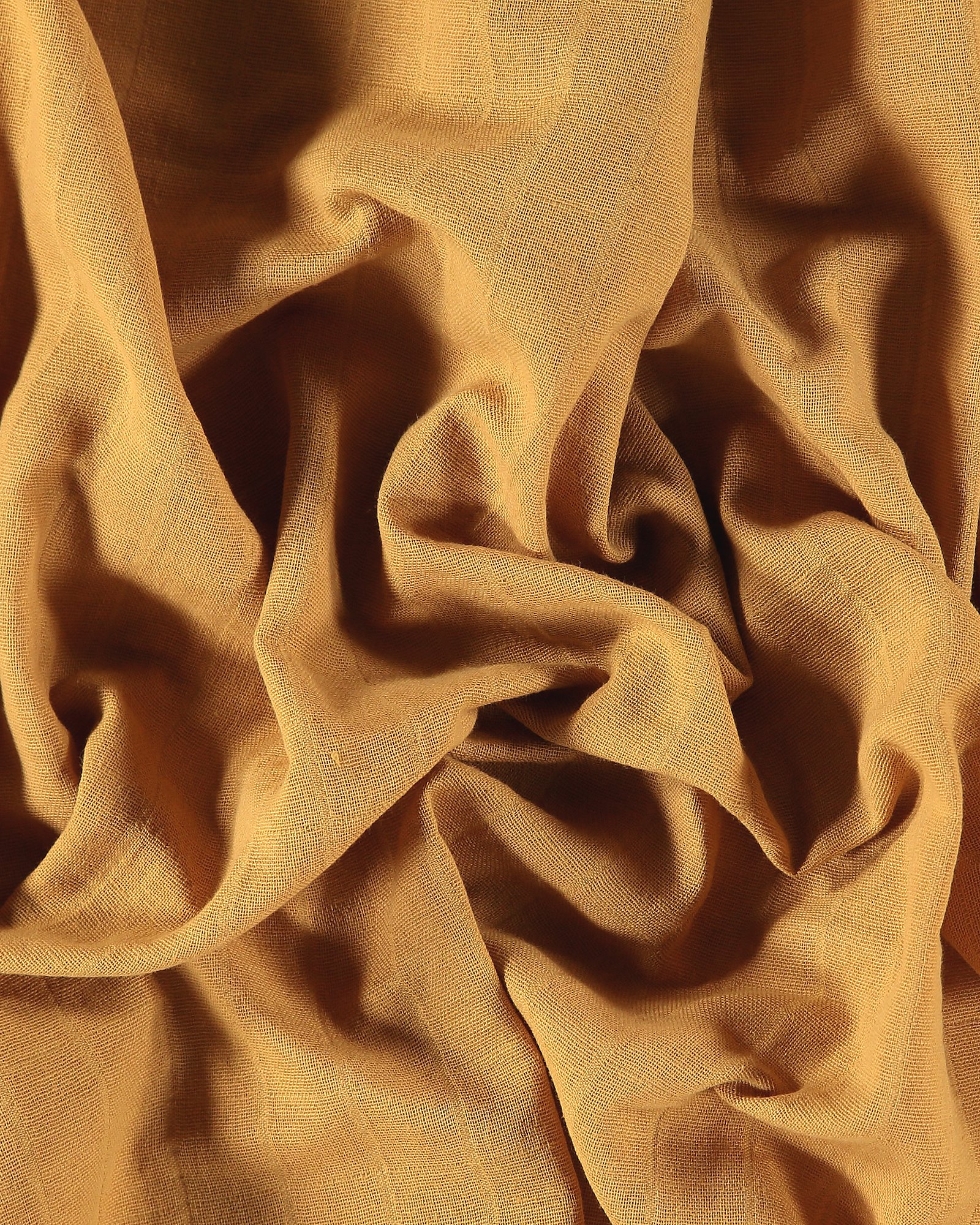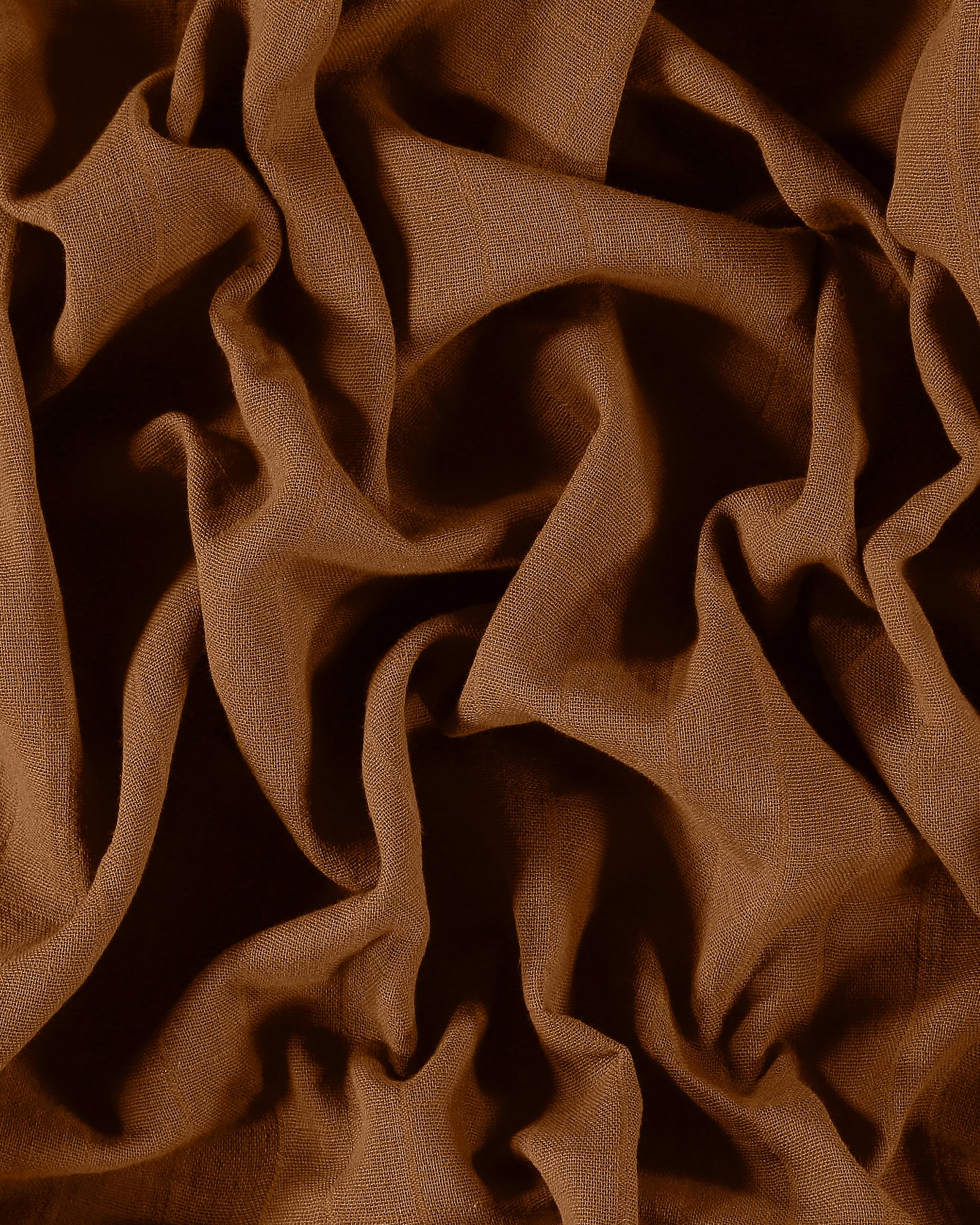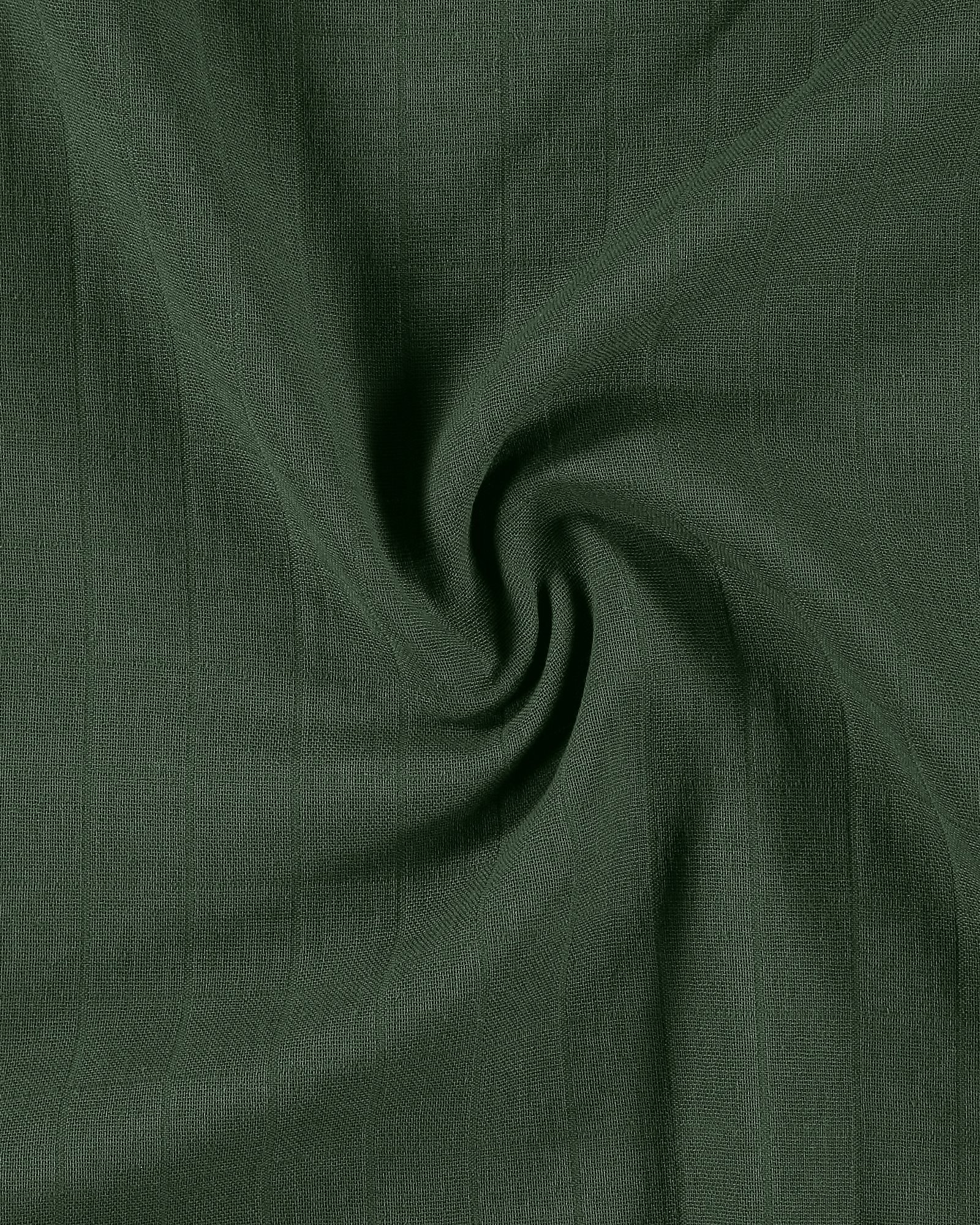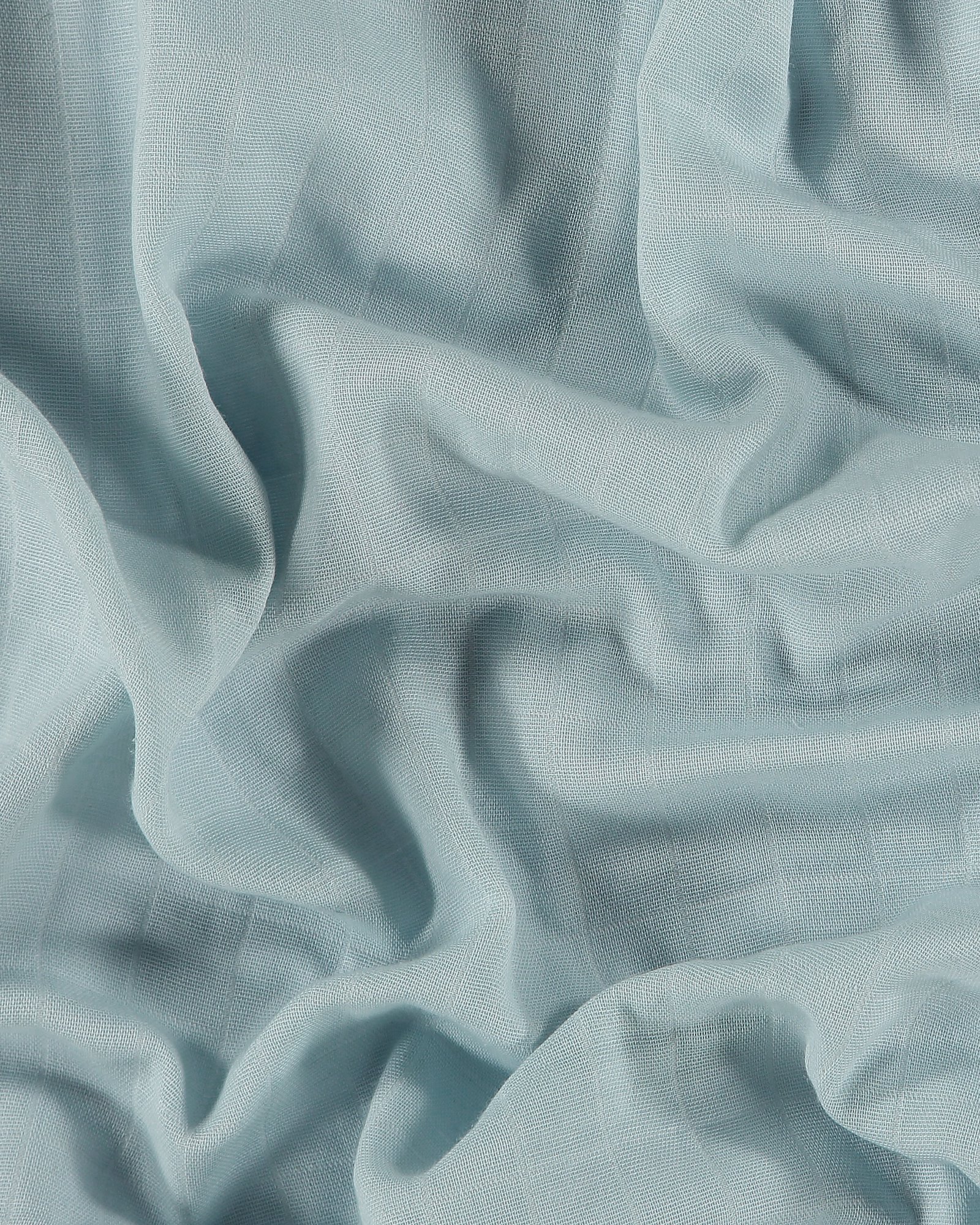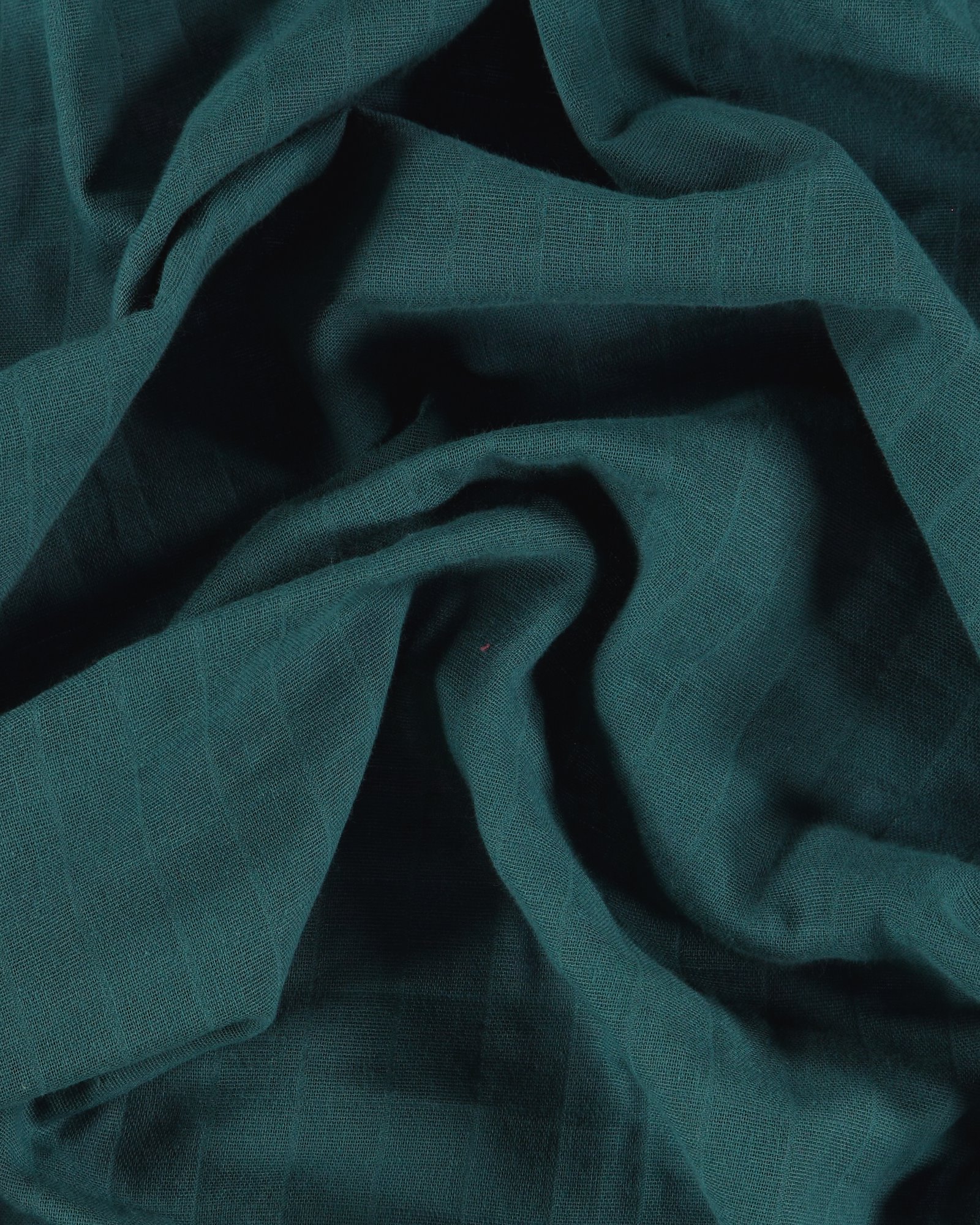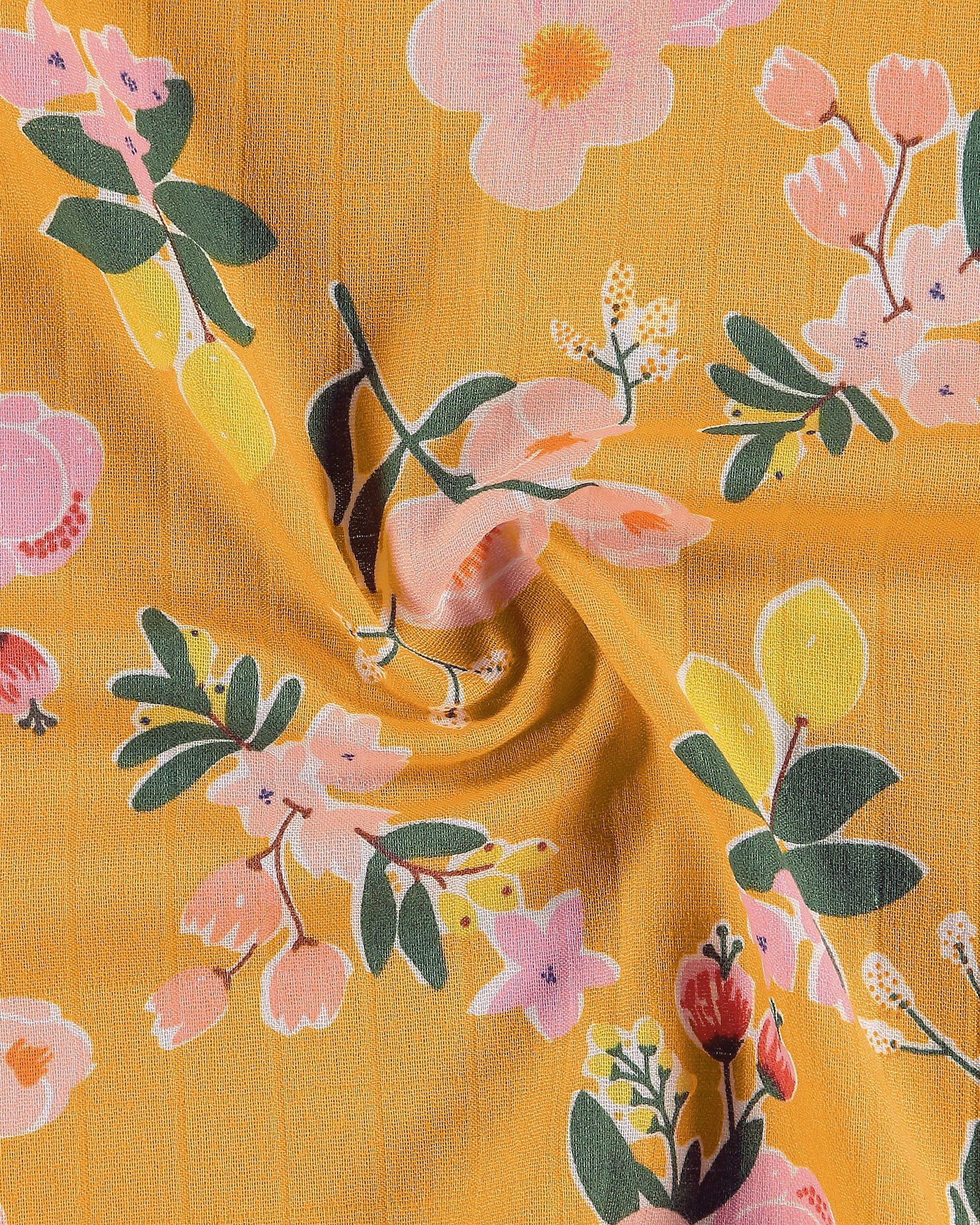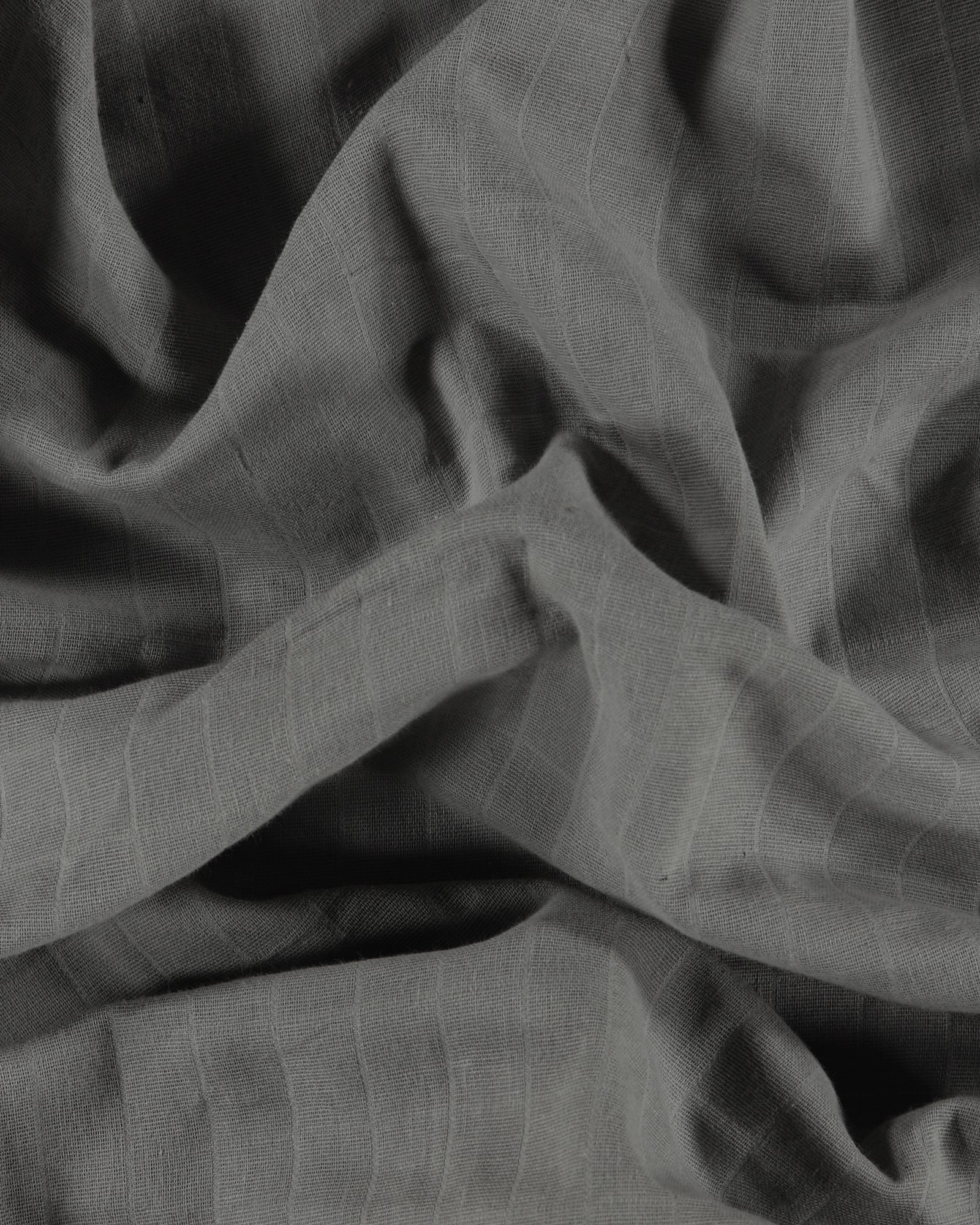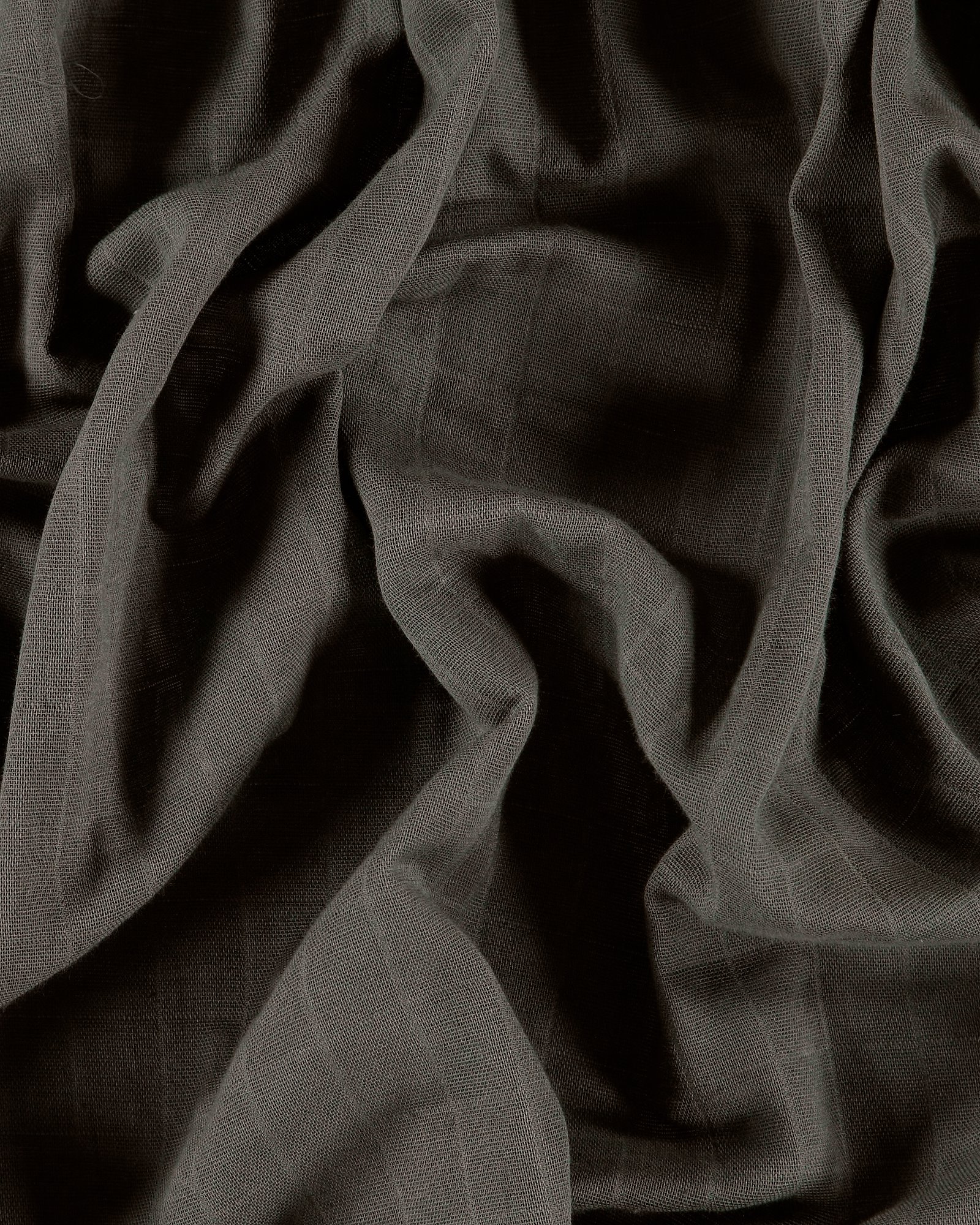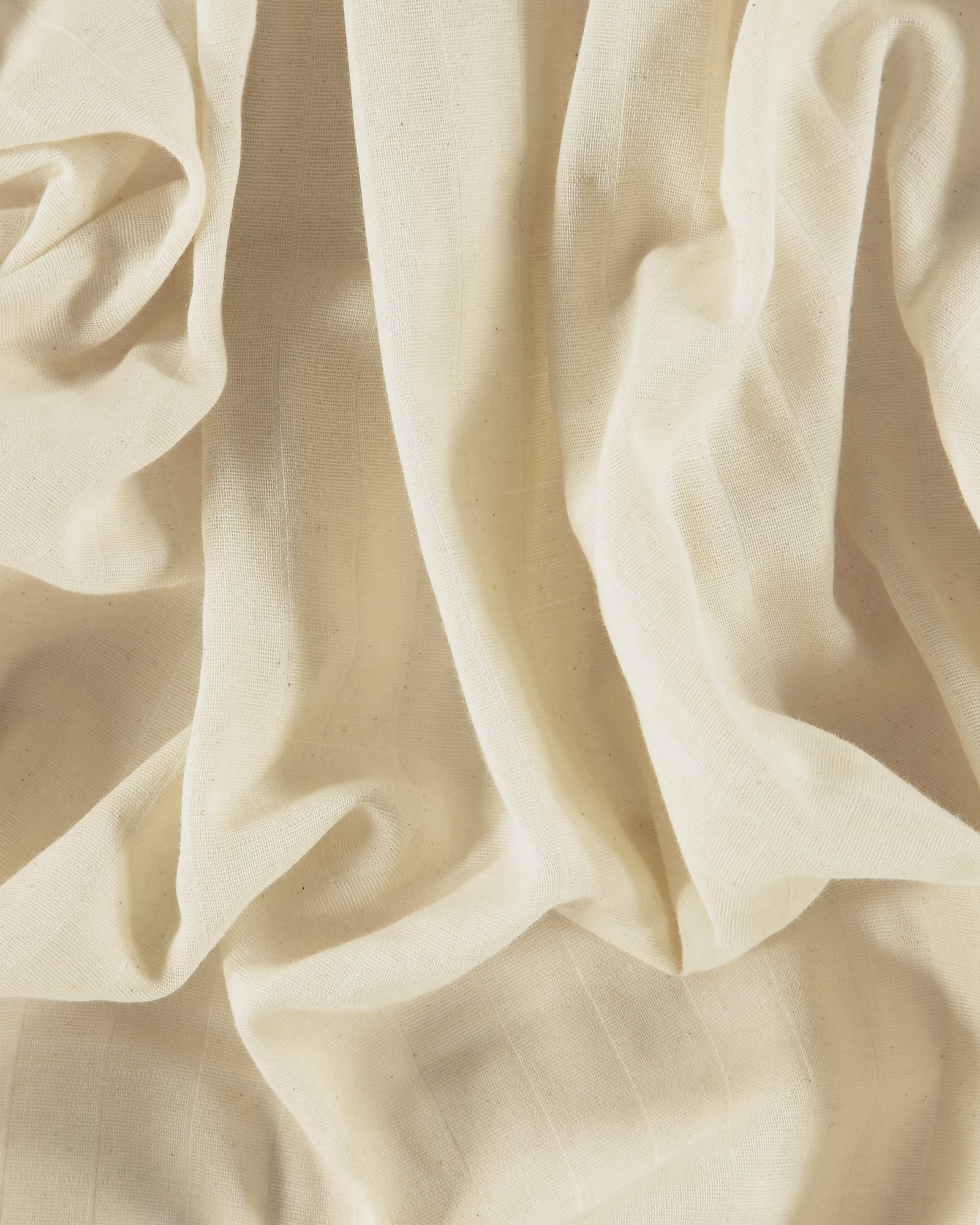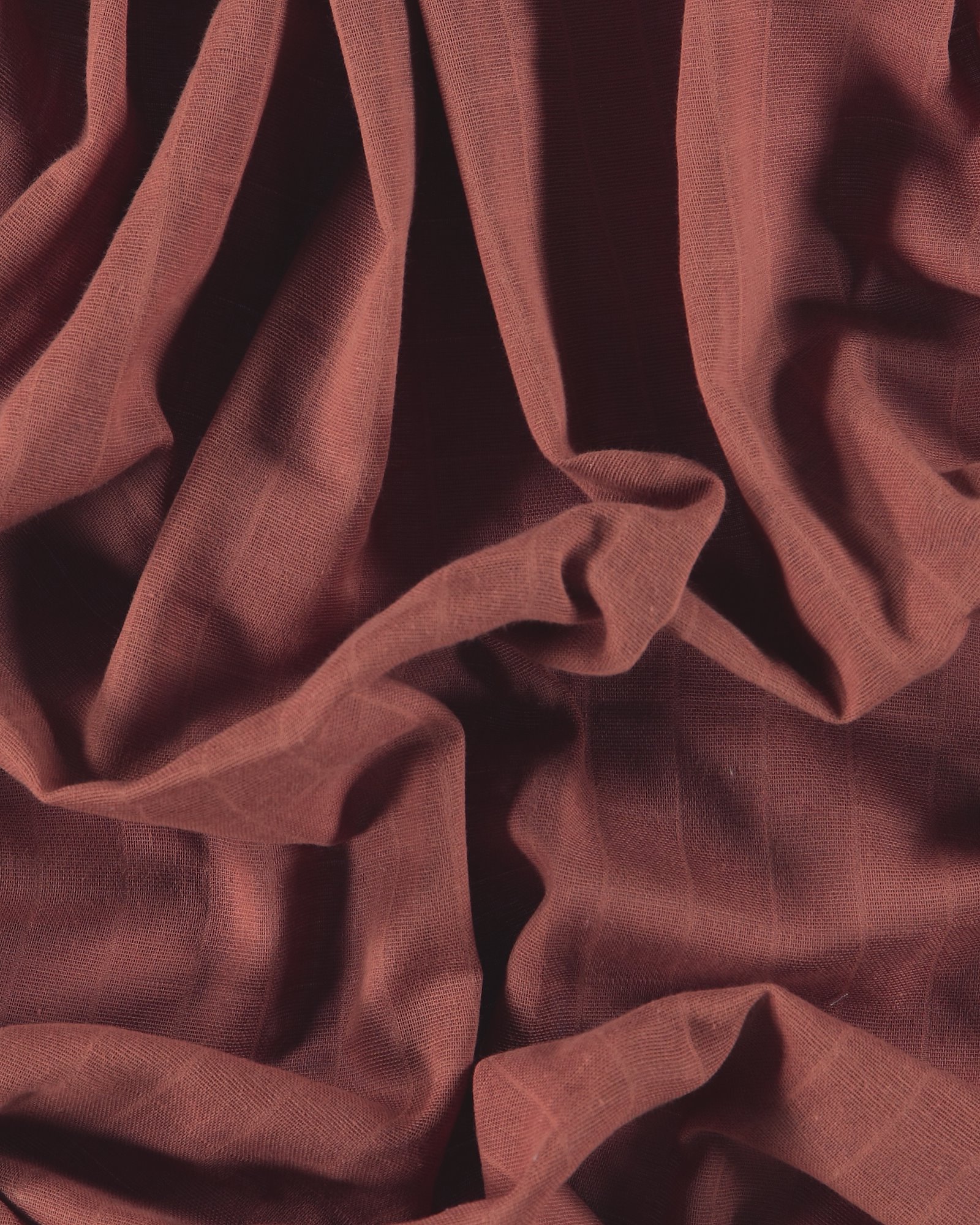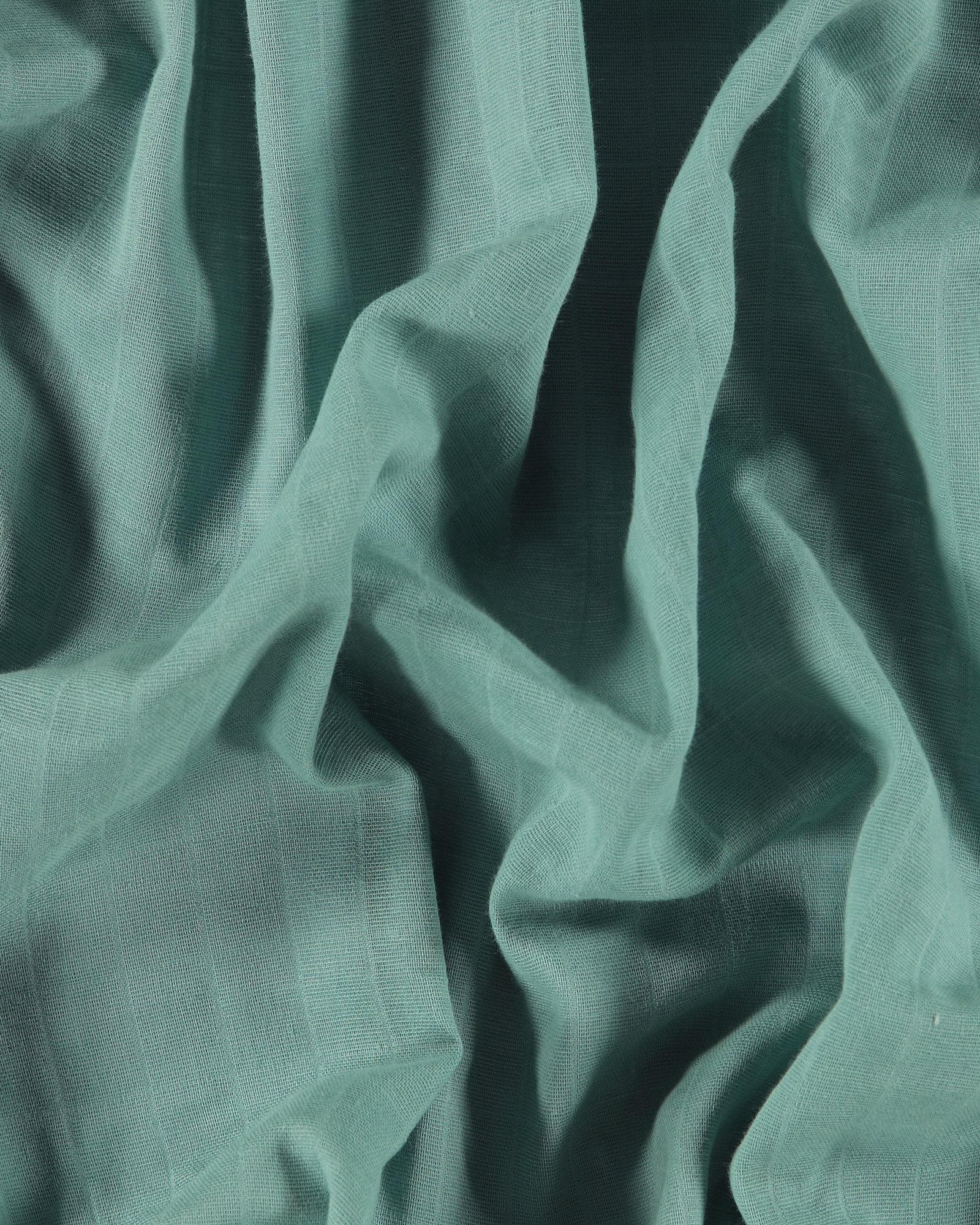Before you start sewing with muslin
We recommend that you wash muslin fabric before you start your project, as it shrinks as much as 18 % in the wash. It is therefore important that you allow for shrinkage when working with muslin.
When you wash your muslin fabric before use, you also ensure that you eliminate surplus dye. It is only after the first wash that the familiar muslin structure comes into its own.
Sew amazing clothes with muslin
The undulating muslin texture does not cling to the body. This means that muslin clothing is airy and helps you maintain a comfortable body temperature. Muslin fabric is particularly suitable for making clothes for children and babies, such as cute dresses, bloomers, bathrobes, and kimonos.
Of course, you can also make a pretty headband or scarf to spice up a baby’s outfit.
In fact, clothes made in muslin are an eminently good choice, especially when travelling. Muslin takes up little space in your suitcase, it is comfortable to wear and it is supposed to be crinkled when you wear it. Muslin clothing is incredibly practical: Just wash, hang up to dry and hey presto, it is crinkled and ready to wear.
Muslin in the nursery
Muslin offers a myriad of options in the nursery. For example, you can make a cute cot canopy to shield baby from too much light and sound. It gives a good cave effect too. Note, however, that colours may fade slightly if your muslin fabric is exposed to direct sunlight.
You can also make your own multi-purpose mattress for baby to romp and play on. Make fine ties so that you can fold your multi-purpose mattress and carry it wherever you go. How about making a baby blanket so your little darling can practise rolling and trying to reach his toes?
Other sewing projects suitable for muslin
Muslin fabrics are soft and comfortable, so muslin is ideal for a snuggly blanket. You can make a teething ring: Sew a cute soft toy animal in muslin and then attach it to a wooden ring. Maybe as a gift for mother and baby?
If you have remnants of muslin, you can cut them into small cloths you can use in the kitchen. Or you can use muslin wipes as handtowels in the guest bathroom. To prevent your cloths from fraying, overlock or zigzag the edges. They last so much longer.
You can also make a hot pad for the cold evenings: Fill your muslin pad with lavender and dry cherry stones. These are good alternatives to synthetic filling. Heat the pad in the microwave oven and get a nice warm duvet when you go to bed.
You could also make a large, colourful cosy muslin throw to curl up in on cold autumn and winter evenings. And you can bring your cosy throw with you on a picnic in the woods or at the beach.
Soft muslin is also a good bedding fabric. The undulating texture means that the fabric does not cling to the body and therefore facilitates good heat regulation. You have an extremely soft set of bed linen and maintain a comfortable body temperature while you sleep. Make fine ties using our cotton ribbon. Alternatively you can use snap fasteners or buttons on your bedding. If you want more help to keep the duvet in place, you can insert a zipper.
Since muslin has an uneven surface, it absorbs moisture well. You can use very absorbent muslin to make a bathrobe or beach towel for a small child. To dry yourself quickly after a swim or before you enter the sauna after a dip in the sea, muslin is ideal.









